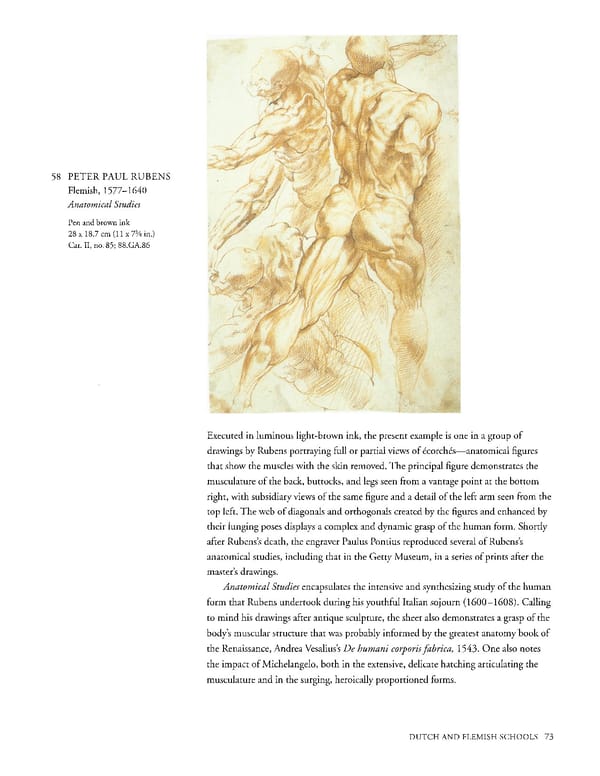58 PETER PAUL RUBENS Flemish, 15771640 Anatomical Studies Pen and brown ink 28 x 18.7 cm (11 x 7 in.) Cat. II, no. 85; 88.GA.86 Executed in luminous lightbrown ink, the present example is one in a group of drawings by Rubens portraying full or partial views of ecorches—anatomical figures that show the muscles with the skin removed. The principal figure demonstrates the musculature of the back, buttocks, and legs seen from a vantage point at the bottom right, with subsidiary views of the same figure and a detail of the left arm seen from the top left. The web of diagonals and orthogonals created by the figures and enhanced by their lunging poses displays a complex and dynamic grasp of the human form. Shortly after Rubens's death, the engraver Paulus Pontius reproduced several of Rubens's anatomical studies, including that in the Getty Museum, in a series of prints after the master's drawings. Anatomical Studies encapsulates the intensive and synthesizing study of the human form that Rubens undertook during his youthful Italian sojourn (16001608). Calling to mind his drawings after antique sculpture, the sheet also demonstrates a grasp of the body's muscular structure that was probably informed by the greatest anatomy book of the Renaissance, Andrea Vesalius's De humani corporis fabrica, 1543. One also notes the impact of Michelangelo, both in the extensive, delicate hatching articulating the musculature and in the surging, heroically proportioned forms. DUTCH AND FLEMISH SCHOOLS 73
 Masterpieces of the Getty Museum: Drawings Page 73 Page 75
Masterpieces of the Getty Museum: Drawings Page 73 Page 75